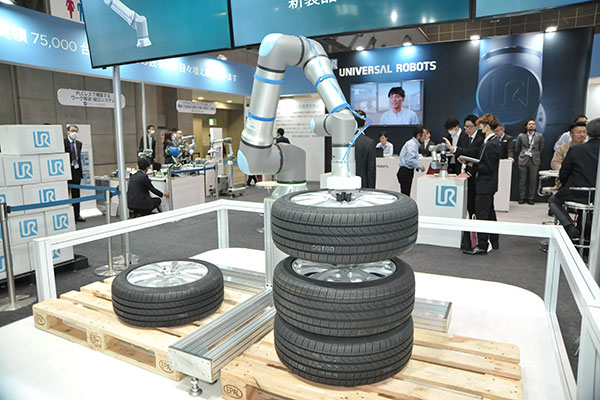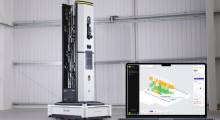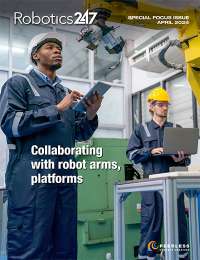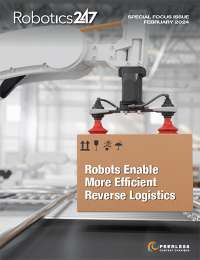“Oh, that's a box. That box looks like this other box, so they must be boxes. That means I can process this box this way.”
In a recent discussion with Robotics 24/7, Chris Franzer, business development manager of Universal Robots, eloquently described one of the biggest challenges in the reverse logistics and robotics discussion: teaching robots how to identify objects, even when the same item is presented in different boxes and in various conditions.
Humans can view a box - or more specifically a collection of boxes - and decide how to pick and sort them most efficiently. How will robots and cobots designed and trained to work alongside humans learn those skills? Calibrating AI perception is an ongoing challenge that robot developers and reverse logistics operators continue to tackle by evolving to handle the overflow of inventory flowing into warehouses around the world.
Lending a (robotic) helping hand
According to the Reverse Logistics Association’s “Returns Report: 2023 Holiday Predictions” based on goTRG 2023 Holiday Survey data, there’s an $816 billion retail return problem. Almost a trillion dollars in inventory making its way from consumers back to e-commerce retailers creates a potential nightmare for organizations without a concrete plan in place to handle the influx of returned merchandise.
Coupled with the jump in returns, organizations are also struggling to fill spots in warehouses to handle these tasks. According to a 2024 report from the U.S. Chamber of Commerce, America’s labor force participation rate sits at 62.5%. That marks a 0.8% drop since February 2020, and a decline of 4.7% since January 2001.
 “If labor is a challenge, and I can't process these orders, or process to rework and refurbish the product and certify that it works properly, then I've got volume of product now sitting at that cell or taking up warehouse space,” Franzer said.
“If labor is a challenge, and I can't process these orders, or process to rework and refurbish the product and certify that it works properly, then I've got volume of product now sitting at that cell or taking up warehouse space,” Franzer said.
Cobots come into the picture with their ability to handle repetitive, tedious and boring tasks. Organizations that invest in a cobot (or several) can train them to handle various elements of their reverse logistics processes and allow staff to work in other high-value areas in the warehouse. While there’s still a need for human intervention when the robot encounters a problem it can’t solve, employees no longer need to perform the same monotonous tasks, moving and sorting boxes from one pallet to another.
What’s in the box?
Outside of the sheer volume problem at hand, another common issue plaguing retailers and robotics providers is the box issue. Returns are by no means a standardized, predictable undertaking.
“There's times when you see a pallet, some of them are in a standard box that the product came in,” Franzer said. “On that same pallet, you may have a box from someone's grocery store that used to hold gallons of milk and now it holds the product with tape and an RMA number written on the side of it. And in the same pallet, you may have a product that has absolutely no packing.”

The lack of return uniformity adds another wrinkle to the return logistics process. Should the cobots depalletize these boxes and restack them? Should the cobots put the inventory on a conveyor belt for further sortation? Where does the human-robot interaction occur and how does that oversight potentially take away from other value that the staff or machine can add to other areas?
“Every pallet is different. When these products are shipped back from FedEx, or UPS, or whatever it is, they all look different,” Franzer said. “They're all palletized differently, different sized pallets, different boxes, different shrink wrap around the outside, different packaging. That makes it a challenge.”
Heavier cobot payload options
Universal Robots expanded its cobot offerings with the UR30 in late 2023. The sixth generation offering (alongside the UR20), can handle 30 kg payloads, a 10 kg increase compared to the UR20.
As the cobot industry grows, so too do the demands of its users. Increased payload capabilities allows other organizations to wade into the cobot waters, and utilize these tools as a way to optimize their reverse logistics ecosystem.
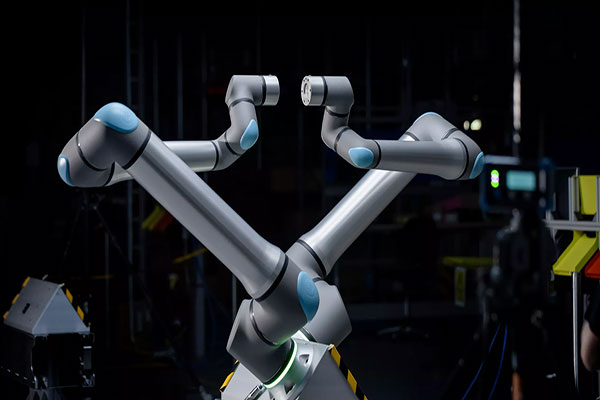
“We've opened up a higher breadth of applications,” Franzer added. “Palletizing, specifically in the material handling space…Maybe even like assembly and test, where you're loading and unloading machines… When you look at the macro with automation and robotics, and then you shift over to the collaborative robotics space, the market was there.”
The UR30 also comes at a similar footprint to its UR20 counterpart. The added payload capability didn’t come with the tradeoff of extra space accommodations in the warehouse, a major pain point for organizations.
What’s next for robots in reverse logistics?
E-commerce operations show no signs of slowing down. It’s to be determined what the returns segment of the operation undergoes in terms of changes to lighten the load of warehouse staff and cobots. One area Franzer brought up for down the road is AI.
“I think we're seeing a lot of AI, and in the background is machine vision, the optics and the vision aspect of things is a challenge,” he said. “Really connecting the dots with different lighting techniques and reflections and missing labels and things that don't come in box…If I had a crystal ball for the next five years, I would assume that's a large uptick.”
Want to learn more about reverse logistics? This article was featured in the February 2024 Robotics 24/7 Special Focus Issue titled “Robots enable more efficient reverse logistics.”
About the Author
Follow Robotics 24/7 on Linkedin
Article topics
Email Sign Up

